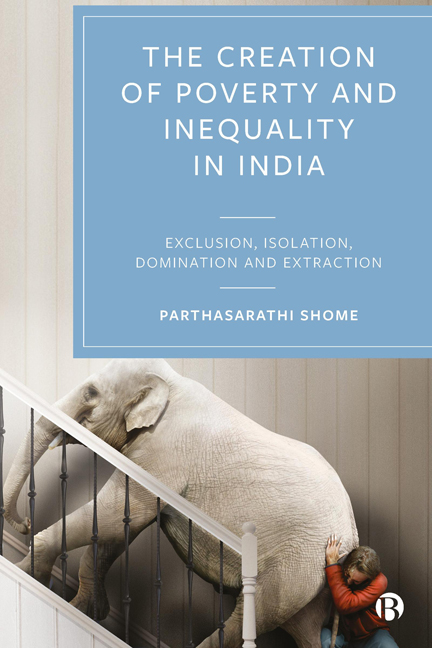Book contents
- Frontmatter
- Dedication
- Contents
- List of Figures and Tables
- Preface
- 1 Introduction
- Part I Macro-Economy and Human Development
- Part II Sources of Inequality and Poverty
- Part III Sectoral Effects
- Part IV Radical Humanism
- Appendix 2.1 Cash Use in India: A Cross-Country Comparison
- Appendix 2.2 Macro-Economic Comparisons: Selected Economies
- Appendix 4.1 Selected Country Tables
- Appendix 5.1 Evidence on Inequality in the US
- Appendix 8.1 Impact of Land Policy
- Appendix 11.1 Impact of Asset Transfer on the Poor
- Index
6 - India’s Caste Structure
Published online by Cambridge University Press: 18 January 2024
- Frontmatter
- Dedication
- Contents
- List of Figures and Tables
- Preface
- 1 Introduction
- Part I Macro-Economy and Human Development
- Part II Sources of Inequality and Poverty
- Part III Sectoral Effects
- Part IV Radical Humanism
- Appendix 2.1 Cash Use in India: A Cross-Country Comparison
- Appendix 2.2 Macro-Economic Comparisons: Selected Economies
- Appendix 4.1 Selected Country Tables
- Appendix 5.1 Evidence on Inequality in the US
- Appendix 8.1 Impact of Land Policy
- Appendix 11.1 Impact of Asset Transfer on the Poor
- Index
Summary
Introduction
The caste structure has existed in India as long as its history has been recorded. Most Indians are familiar, even though not all may be comfortable with the concept and repercussions of caste on society. That unfortunately translates to a passive form of racism that does not openly resemble the racism of the West but is a variant of it. In an anthropological twist, this author recalls Indian visitors from suburbia visiting his home in the urban centre of Washington DC when he was residing there. They visited only during the day usually for lunch if the purpose of the visit was to have a meal. Typically, fear prevailed regarding entering Washington DC from the states of Maryland or Virginia, states to the north and south of Washington respectively where most Indians resided. The widely prevalent view was that, after sundown, Black violence could descend willy-nilly on neighbourhoods with a Washington DC address. They openly expressed their concern, however unfounded, within the confined safety of their own communities where they felt free to express their fears. Any protestation would be met with amusement at the complainant's contrary point of view or manner of living. Attitudes towards Africans resident in India are all too apparent pari passu with India's own worsening caste separation. Intercaste marriage can still lead to death in the vastness of non-urban areas. The slide of society into silence and little opprobrium over caste-based lynching in recent years reflect the newly emerging realities of caste-based inequality in India.
Earlier, India did make significant attempts to recognize the gravity of exclusion, isolation and domination leading to poverty and inequality, and attempted various forms of compensation to attenuate their deleterious consequences. However, actual achievement has fallen short and caste discrimination, together with occasional atrocities, continues in large parts of India, in particular in the so-called Hindu belt comprising the Hindi speaking northern states or those with contiguous languages using the Devanagari script. Untouchability, despite being rendered unconstitutional in India's 1950 constitution, together with the caste system, continues to exist in many overt and covert forms, representing the primary obstacles, the fountainhead perhaps, of India's knee-breaking inequality and poverty.
- Type
- Chapter
- Information
- The Creation of Poverty and Inequality in IndiaExclusion, Isolation, Domination and Extraction, pp. 138 - 176Publisher: Bristol University PressPrint publication year: 2023



